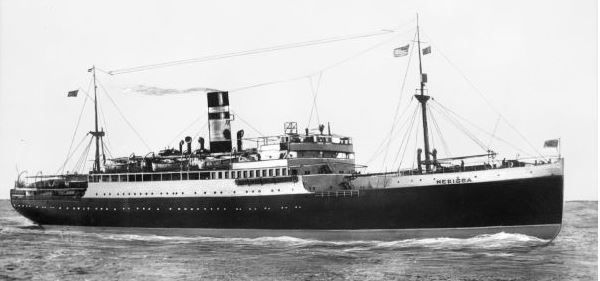Canadian Logisticians Darkest Day

SS Nerissa
30 April marks the 75th anniversary of the darkest day in the history of Canadian Forces logisticians. On that day in 1941 forty four military logisticians and two national defence civilian auditors were killed by enemy action. That action also represented a key event in the history of the Battle of the Atlantic.
The SS Narissa was a passenger and freight steamer built for the Red Cross Line for service between New York, Halifax and St John`s. Her owners, the New York, Newfoundland Steamship Co. Ltd ordered the ship on 3 November 1925, and the 229 passenger ship, finished to a level “bordering on the luxurious“, made her maiden voyage to New York on 5 June 1926. (National Shipbuilding Procurement Strategy advocates take note.) Under loaded conditions she could make 17 knots.
In 1939, the Narissa, as part of the United Kingdom merchant marine, was pressed into troopship service, plying the North Atlantic between Halifax and Liverpool. She was armed with a 4 inch naval gun and a 40 mm Bofurs antiaircraft gun, manned by the Royal Artillery. Since she could travel faster than even the fast convoys, she would travel alone, without escort.
On 21 April 1941, she departed Halifax, bound for St John`s, then on to Liverpool. It was her 40th wartime trip across the North Atlantic. She carried 145 Canadian servicemen along with RAF and Norwegian Army Air Service personnel, Northern Electric technicians, members of the press, and a number of civilians.
Approaching Ireland the Admiralty, based on reports from Coastal Command aircraft and intercepted German Navy messages, vectored the Narissa into a supposedly safe approach lane. They were wrong. On 30 April she was hit by three torpedoes and sent to the bottom by German submarine U-552.
83 Canadian servicemen perished. Forty four of them were logisticians: the largest single one day loss of Canadian loggies ever to enemy action. The loss included 33 Army and Corps of Military Staff Clerks clerks; three Army paymasters; an RCN Paymaster Commander; and other members of the Royal Canadian Ordnance Corps and the Royal Canadian Army Service Corps. In addition to the military logisticians, two civilian auditors from National Defence Headquarters were lost, including 59 year old Robert Montgomery. The youngest loggie casualty was 18 year old Howard Petitt, a sergeant in the Corps of Military Staff Clerks.
The SS Narissa was the only troopship carrying Canadian military to be lost in World War II, granting her a special place in the history of the Battle of the North Atlantic.
As Canadian Forces logisticians, serving and retired, we must remember the Narissa, and our comrades that perished with her.
Dr. Bernie Grover for the Royal Canadian Logistics Service Association
